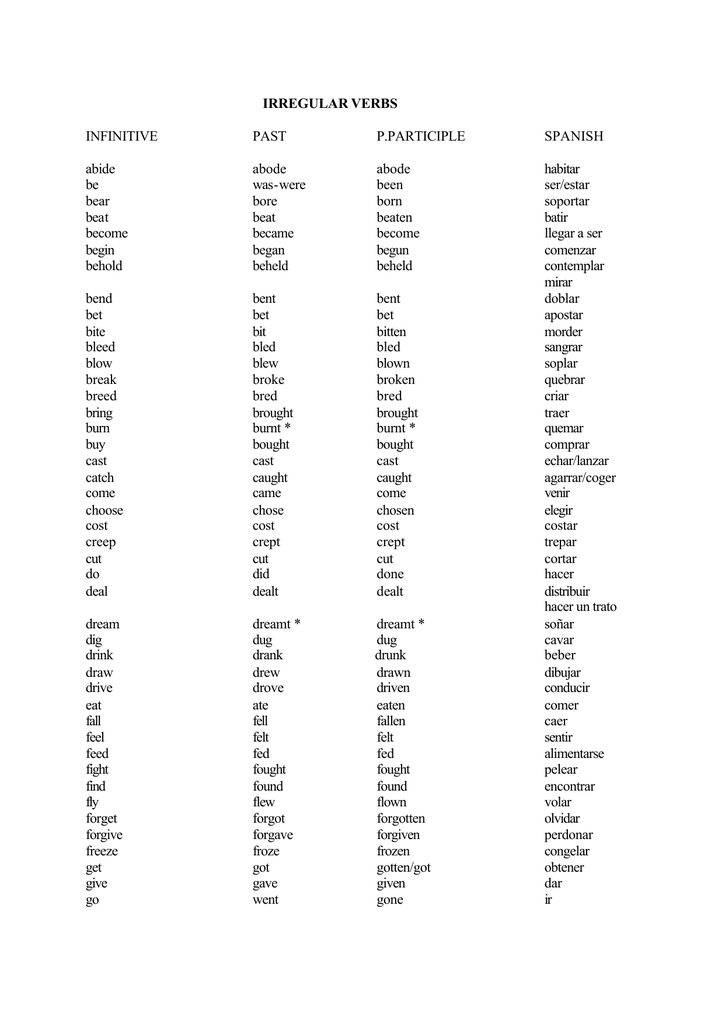

You should remember the verbs with the e>ie as a part of the infinitive in Spanish so that you will be able to conjugate these verbs correctly. Notice that nosotros/nosotras and vosotros/vosotras do not undergo a stem change.Īll the e>ie stem‐changing verbs listed below include the stem change in parentheses after the infinitive.

In Table, the ie is underlined where the stem change occurs. The verb cerrar is typical of an ‐ ar verb with an e>ie stem change. In the lists and charts below, the specific e that changes to ie is underlined. If a verb has two e's in the stem, it will always be the second e that undergoes a stem change. That means the stressed letter e in the stem of the verb will change to ie in certain forms of the verb. The best way to see the patterns is to consider a few examples. All forms of the verb will undergo a stem change except for nosotros/nosotras and vosotros/vosotras. The patterns for stem‐changing verbs are very consistent. When you learn the meanings of the verbs below, memorize what kind of stem change each undergoes as well. The verbs listed below are grouped according to the type of stem change they undergo. There are basically three different ways in which the stem of a verb can change in the present tense. Stem‐changing verbs are so common that most dictionaries inform you of the stem change in the entry even before giving the verb's translation. Once you memorize the type of stem change a verb undergoes, the actual patterns of the stem‐changing verbs are quite simple because all the conjugation endings are regular, conjugating these verbs is easy.įor all stem‐changers, it is always the stressed syllable that changes. The hardest part about stem‐changers is that you have to memorize the verbs in which stem changes occur.

It is impossible to identify that a verb is a stem‐changer by simply looking at the infinitive unless you recognize a previously learned stem‐changer with a prefix. You must learn each particular verb and remember that it is a stem‐changer. Yo form! The stem of a verb is what is left when you remove the infinitive ending ( ‐ar, ‐er, or ‐ ir).īecause the stem of the verb changes, these verbs are called stem‐changing verbs, or stem‐changers. There is, however, a different kind of predictable verb conjugation in which the stem of the verb changes and the endings are normal-even the Forming the Past Subjunctive: Verb Rulesįor the verbs presented so far, the ending is what is irregular.Past Subjunctive and Sequence of Tenses.Passive Voice Conjunctions Sentence Variations.Present Subjunctive: Truly Irregular Verbs.Stem‐Changers in the Present Subjunctive.Verbs with Spelling Changes in the Preterit.Stem‐Changing Verbs in the Present Tense.Interrogative Pronouns (Question Words).


 0 kommentar(er)
0 kommentar(er)
